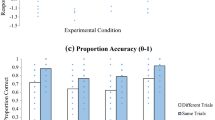Abstract
A key feature of psychopathy is the ability to deceive, manipulate, and con the unwary, while seeming to be perfectly sincere. Is this impression of sincerity achieved solely through body gestures and facial expression, or is there also something different about the voice quality of psychopaths? We analyzed the acoustic characteristics of speech in 20 male offenders (10 psychopaths and 10 nonpsychopaths), assessed with the Psychopathy Checklist—Revised (Hare, 1991). We used a computer program developed by Alpert, Merewether, Homel, Martz, and Lomask (1986) to measure variations in amplitude and prosody. Results indicated that psychopaths spoke more quietly than controls and did not differentiate, in voice emphasis, between neutral and affective words. These findings are consistent with the developing view that psychopaths are insensitive to the emotional connotations of language. In addition, their vocal characteristics may be part of a self-presentation mode designed to manipulate and control interpersonal interactions.
Similar content being viewed by others
REFERENCES
Alpert, M. (1966). Feedback effects of audition and vocal effort on intensity of voice. Journal of the Acoustical Society of America, 39, 1218.
Alpert, M., & Anderson, L. T. (1977). Imagery mediation of vocal emphasis in flat affect. Archives of General Psychiatry, 34, 208–212.
Alpert, M., Merewether, F., Homel, P., Martz, J., & Lomask, M. (1986). VOXCOM: A system for analyzing natural speech in real time. Behavior Research Methods, Instruments, and Computers, 18, 267–272.
American Psychiatric Association. (1994). Diagnostic and statistical manual of mental disorders (4th ed.). Washington, DC: Author.
Beck, A., Ward, C., Mendelson, M., Mock, J., & Erbaugh, J. (1961). An inventory for measuring depression. Archives of General Psychiatry, 4, 561–571.
Cleckley, H. (1976). The mask of sanity (5th ed.). St. Louis, MO: Mosby.
Day, R., & Wong, S. (1996). Anomalous perceptual asymmetries for negative emotional stimuli in the psychopath. Journal of Abnormal Psychology, 105, 648–652.
Feldstein, S., & Welkowitz, J. (1987). A chronography of conversation: In defense of an objective approach. In A. Siegman & S. Feldstein (Eds.), Nonverbal Behavior and Communication. Hillsdale, NJ: Erlbaum.
Forth, A. E., Hart, S. D., & Hare, R. D. (1990). Assessment of psychopathy in male young offenders. Psychological Assessment, 2, 342–344.
Friedhoff, A. J., Alpert, M., & Kurtzberg, R. L. (1962). An effect of emotion on voice. Nature, 193, 357–358.
Friendly, M., & Franklin, P. E. (1982). The Toronto Word Pool: Norms for imagery, concreteness, orthographic variables, and grammatical usage for 1,080 words. Behavior Research Methods and Instrumentation, 14, 375–399.
Gillstrom, B. J., & Hare, R. D. (1988). Language-related hand gestures in psychopaths. Journal of Personality Disorders, 2, 21–27.
Grant, V. (1977). The menacing stranger. New York: Dover
Hare, R. D. (1991). The Hare Psychopathy Checklist—Revised. Toronto, Ontario: Multi-Health Systems.
Hare, R. D. (1993). Without conscience: the disturbing world of the psychopaths among us. New York: Simon & Schuster.
Hare, R. D., Harpur, T. J., Hakstian, A. R., Forth, A. E., Hart, S. D., & Newman, J. P. (1990). The revised psychopathy checklist: Reliability and factor structure. Psychological Assessment: A Journal of Consulting and Clinical Psychology, 2, 338–341.
Hare, R. D., & McPherson, L. M. (1984). Psychopathy and perceptual asymmetry during verbal dichotic listening. Journal of Abnormal Psychology, 93, 141–149.
Harpur, T. J., Hakstian, R., & Hare, R. D. (1988). Factor structure of the psychopathy checklist. Journal of Consulting and Clinical Psychology, 56, 741–747.
Merewether, F. C., & Alpert, M. (1990). The components and neuroanatomic bases of prosody. Journal of Communication Disorders, 23, 325–336.
Raine, A., O'Brien, M., Smiley, N., Scerbo, A., & Chan, C. (1990). Reduced lateralization in verbal dichotic listening in adolescent psychopaths. Journal of Abnormal Psychology, 99, 272–277.
Rieber, R. W. (1997). Manufacturing social distress: Psychopathy of everyday life. New York: Plenum Press.
Rieber, R. W., & Vetter, H. (1995). Psychopathology of language and cognition. New York: Plenum Press.
Rime, B., Bouvy, H., & Rouillon, F. (1978). Psychopathy and nonverbal behavior in an interpersonal situation. Journal of Abnormal Psychology, 87, 636–643.
Wechsler, D. (1981). The psychometric tradition: Developing the Wechsler Adult Intelligence Scales. Contemporary Educational Psychology, 6, 82–85.
Williamson, S., Harpur, T. J., & Hare, R. D. (1991). Abnormal processing of affective words by psychopaths. Psychophysiology, 28, 260–273.
Author information
Authors and Affiliations
Rights and permissions
About this article
Cite this article
Louth, S.M., Williamson, S., Alpert, M. et al. Acoustic Distinctions in the Speech of Male Psychopaths. J Psycholinguist Res 27, 375–384 (1998). https://doi.org/10.1023/A:1023207821867
Issue Date:
DOI: https://doi.org/10.1023/A:1023207821867




